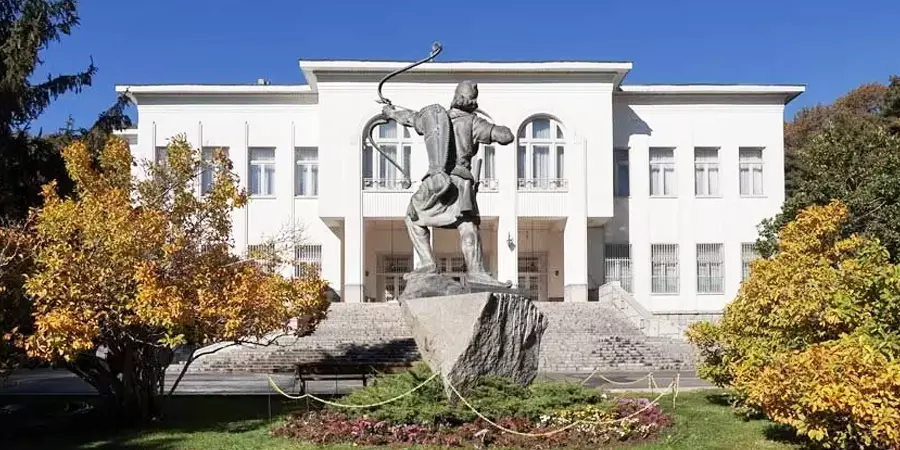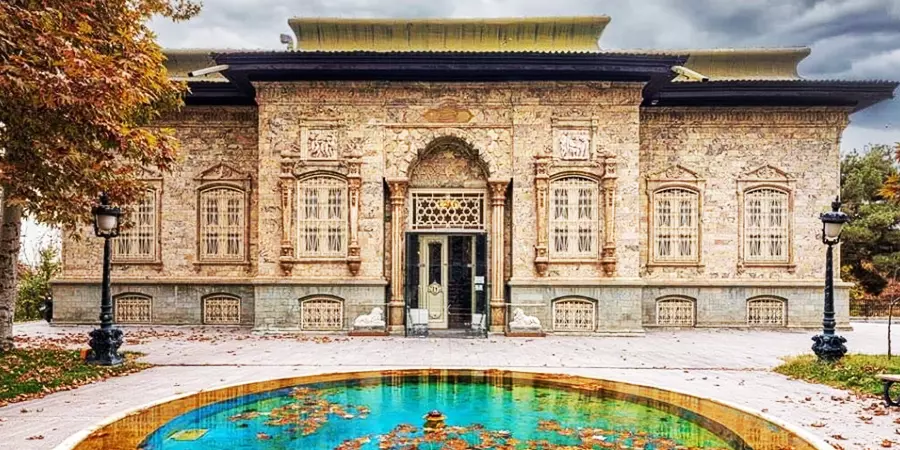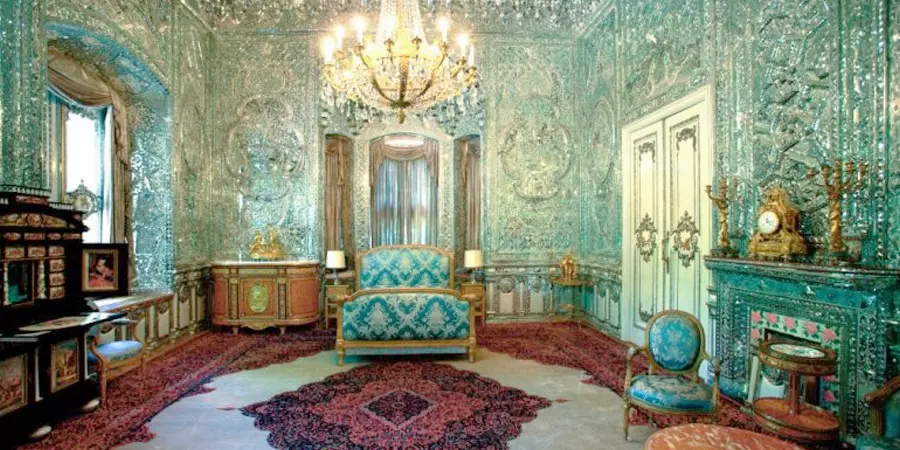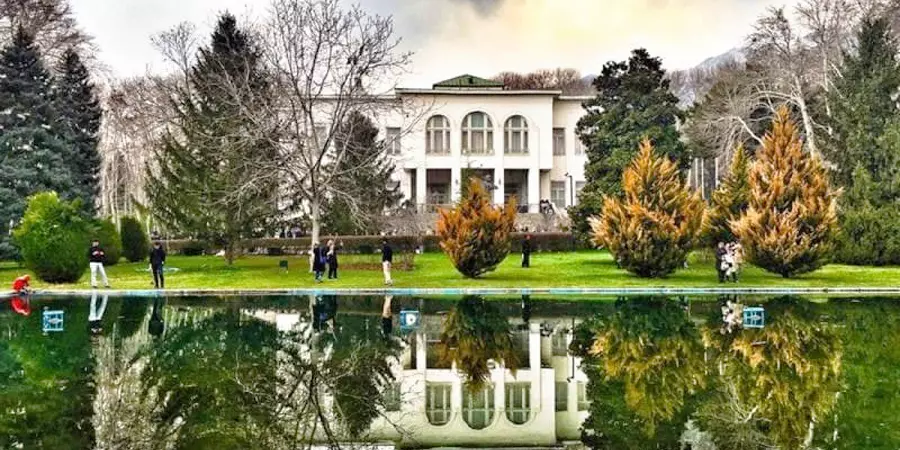Nestled amidst the lush greenery of Tehran, Saad Abad Palace stands as a testament to Iran’s rich history and opulent past. This magnificent palace complex has witnessed the rise and fall of dynasties, political upheavals, and cultural transformations. In this article, we’ll take you on a journey through the fascinating history and architectural marvels of Saad Abad Palace.
Saad Abad Palace history
Saad Abad Palace, nestled in the heart of Tehran, Iran, is a remarkable testament to the country’s rich and complex history. The palace complex has witnessed the rise and fall of dynasties, significant political events, and cultural transformations over the centuries.

Qajar Dynasty Retreat
The origins of Saad Abad Palace date back to the 19th century during the Qajar dynasty. It was initially constructed as a royal retreat for the Qajar rulers, who sought respite from the hustle and bustle of Tehran in its serene surroundings. At this time, it was a modest structure surrounded by lush gardens and greenery.
Pahlavi Dynasty Transformation
It was during the 20th century, under the rule of the Pahlavi dynasty, that Saad Abad underwent a remarkable transformation. Reza Shah Pahlavi, the founder of the dynasty, recognized the potential of the location and began an ambitious project to expand and modernize the palace complex.
Reza Shah’s vision was further carried forward by his son, Mohammad Reza Shah Pahlavi, who oversaw the construction of numerous palaces within the Saad Abad grounds. These palaces were designed by prominent architects and incorporated a blend of Persian and European architectural styles, creating a unique and opulent environment.

Summer Residences and Political Significance
During their rule, the Pahlavi kings used Saad Abad Palace as their summer residence. The palace complex also played a pivotal role in hosting important political events, negotiations, and gatherings. Notably, it was the site where key treaties and agreements were signed, shaping Iran’s destiny.
The Iranian Revolution
In the late 1970s, Saad Abad Palace found itself at the center of a momentous period in Iran’s history—the Iranian Revolution of 1979. As the nation underwent radical political and cultural transformations, the palace complex symbolized the changing times. The fall of the monarchy marked the end of an era for Saad Abad as a royal retreat.
A Cultural Treasure
Today, Palace stands not only as a historical landmark but also as a cultural treasure. Its extensive gardens, art collections, and architectural marvels attract visitors from around the world. The palace’s museums, including the Royal Costume Museum and the Museum of Fine Arts, offer glimpses into Iran’s rich artistic heritage.

The Genesis of Saad Abad
A Royal Retreat
Built in the 19th century, Saad Abad Palace initially served as a royal retreat for the Qajar dynasty. Its serene surroundings and pleasant climate provided a perfect escape from the bustling city of Tehran.
Pahlavi Era Transformation
In the 20th century, during the reign of the Pahlavi dynasty, Saad Abad underwent a significant transformation. Reza Shah Pahlavi and his son, Mohammad Reza Shah, turned it into a sprawling palace complex, featuring stunning architecture and extensive gardens.
Architectural Marvels
The Saad Abad complex encompasses over 18 palaces and museums, each showcasing unique architectural styles and historical significance. The White Palace, one of the highlights of Saad Abad, boasts an elegant blend of Persian and European architecture. Its white façade, adorned with intricate details, reflects the taste of the Pahlavi dynasty. Over the years, Saad Abad Palace has hosted crucial political events and negotiations. It served as the summer residence for Iran’s rulers and witnessed the signing of important treaties. During the Iranian Revolution of 1979, Saad Abad Palace became a symbol of change and revolution. It played a role in the nation’s transition to an Islamic republic.

Museum Tour
Visitors can explore various museums within the complex, including the Royal Costume Museum and the Museum of Fine Arts, which house exquisite collections. Saad Abad’s sprawling gardens, with their colorful blooms and tranquil pathways, offer a serene escape from the city’s hustle and bustle.
Saad Abad Palace Ticket Information
the Palace offers visitors the opportunity to explore its magnificent palaces, museums, and beautiful gardens. To gain entry to this historical site, you’ll need to purchase a ticket. Here’s some essential information about Saad Abad Palace tickets:
- Ticket Prices: The ticket prices may vary depending on factors such as nationality and age. As of my last knowledge update in September 2021, the ticket prices for foreign tourists were generally higher than those for Iranian nationals. There might also be reduced rates for students and children.
- Opening Hours: Palace typically opens in the morning and closes in the evening. It’s essential to check the current opening hours before planning your visit, as they may be subject to change.
- Guided Tours: While not always mandatory, guided tours are available for those who wish to have a more informative and immersive experience. These tours can provide valuable insights into the history and significance of the palace complex.
- Ticket Purchase: Tickets can usually be purchased at the entrance gate of Saad Abad Palace. It’s advisable to bring cash in the local currency, as credit card acceptance may not always be available.
- Photography: Photography is generally allowed in the outdoor areas and gardens of Palace. However, there may be restrictions on photography inside some of the museums or palace buildings. It’s a good idea to inquire about photography rules when purchasing your ticket.
- Special Events: Occasionally, Saad Abad Palace hosts special events, exhibitions, or cultural performances. These may have separate ticketing and entry requirements, so check for any upcoming events if you’re interested in attending.
- Accessibility: The palace complex is accessible to visitors with varying mobility needs, but it’s a good idea to check for specific accessibility features and services in advance if needed.
Please note that ticket prices and policies can change over time, so it’s essential to verify the most up-to-date information from official sources or contact Palace directly before planning your visit. Enjoy your visit to this historical and cultural treasure in Tehran!

Conclusion
Saad Abad Palace is more than just a historical landmark; it’s a living testament to Iran’s dynamic past. Its architectural grandeur and historical significance make it a must-visit destination for anyone interested in Iran’s imperial history.
Is Saad Abad Palace open to the public?
Yes, Palace is open to the public, and visitors can explore its museums and gardens.
What are the opening hours of Saad Abad Palace?
The palace complex typically opens in the morning and closes in the evening. Specific timings may vary, so it’s advisable to check in advance.
Are guided tours available at Palace?
Yes, guided tours are available, and they provide valuable insights into the history and significance of the palace.
Is photography allowed within the palace complex?
Photography is generally allowed in the outdoor areas and gardens but restricted in some indoor museum sections. Always check with the staff for specific guidelines.
How can I get to Saad Abad Palace from Tehran city center?
Saad Abad is easily accessible from Tehran city center by car, taxi, or public transportation. It’s a short drive away from the heart of the city.




No comment